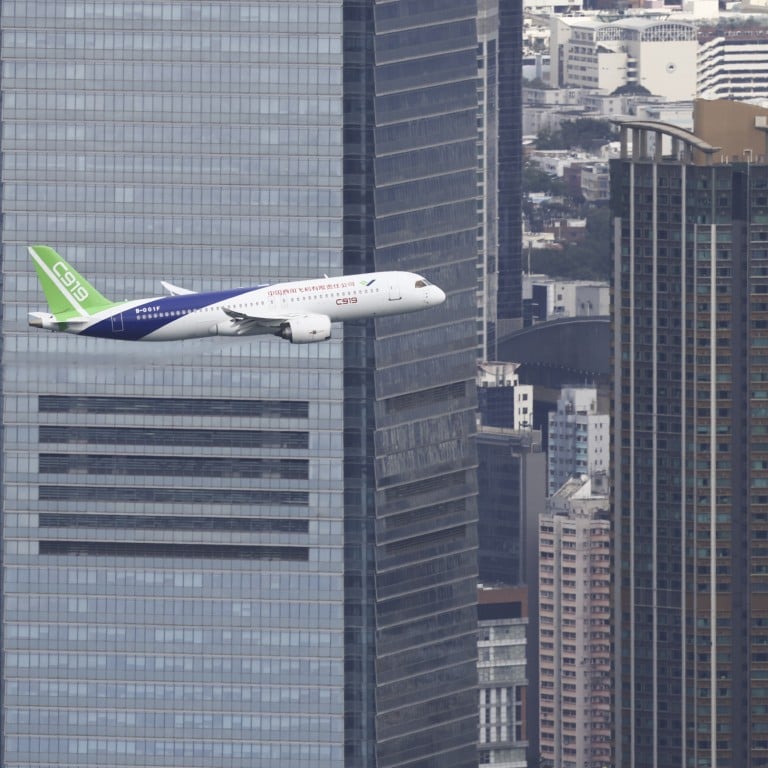
China’s C919 maker has sky-high ambitions to grab a piece of the aviation pie from Boeing, Airbus as domestic demand soars
- State-owned Commercial Aircraft Corporation of China plans to expand domestic aviation market by boosting production this year – a move buoyed by the post-Covid recovery in global aviation
- Comac could claim 3 per cent of the world’s narrowbody-aircraft share from Boeing and Airbus by 2027, according to analysts
The state-owned Commercial Aircraft Corporation of China (Comac), the producer of the narrowbody plane, has plans to greatly boost its production capacity this year, according to comments made by its deputy general manager, Zhang Yujin, to prominent news outlet The Paper on Wednesday.
The investment will amount to tens of billions of yuan over the next three to five years, Zhang revealed on the sidelines of the Shanghai municipal people’s congress.
The domestically developed C919 airliner is designed to carry between 140 and 210 passengers and aims to directly compete with Boeing’s 737 and Airbus’ A320.
China’s home-grown C919 makes landing as regular Shanghai-Beijing route begins
As of this month, Comac has delivered four C919 aircraft to its first customer, China Eastern Airlines.
Three of them have been deployed to service routes from Shanghai to the southwestern metropolis of Chengdu, Sichuan province, after its maiden commercial flight in late May. The jet had completed 655 commercial flights and carried nearly 82,000 passengers by the end of last year.
Earlier this month, the airlines put the jet on a regular round-trip route linking the capital Beijing with the economic hub of Shanghai, marking the efforts to penetrate the domestic market.
On this route, one of the world’s busiest, the C919 has achieved a passenger-occupancy rate of more than 85 per cent from Shanghai and close to 100 per cent on the return journey from Beijing.
These aircraft would only partially be able to meet the demand of China Eastern’s top-five routes, Li Taoyang, an analyst with China Securities, wrote in a report last week.
With more than 4,000 other flights on China Eastern, and the considerable market demand of other Chinese airlines, there is still “huge room for domestic C919 replacement demand in the future”, Li said.
Comac may take 3 per cent of the world’s narrowbody share from Boeing and Airbus by 2027, according to a November report by Tianfeng Securities.
The state-owned aeroplane manufacturer said in September that it had 1,061 orders for the C919. National flag carrier Air China announced a purchase last month of six C919 jets, with deliveries expected between 2024 and 2025.
China’s C919 jet sold for higher price as Boeing returns to market
The move to expand China’s domestic aviation market has also been buoyed by the post-Covid recovery of the global aviation market.
To cope with China’s demand for air travel during the upcoming Lunar New Year holiday season, which starts on Friday, China Eastern Airlines will put 783 aircraft into service for the holiday week and operate 3,280 passenger flights per day – a 42 per cent increase over normal offerings.
China is also pushing to globalise its domestic aviation presence, with the Civil Aviation Administration of China pledging this month to work with the European Union Aviation Safety Agency to help incorporate its aircraft into the continent’s plans.
The total number of civil aircraft in the world could reach 36,305 by 2033, which would be an increase of 32.57 per cent from a decade ago, according to Oliver Wyman, an American management consulting firm. And it foresees China, North America and western Europe being the three markets with the highest demand for aircraft.

